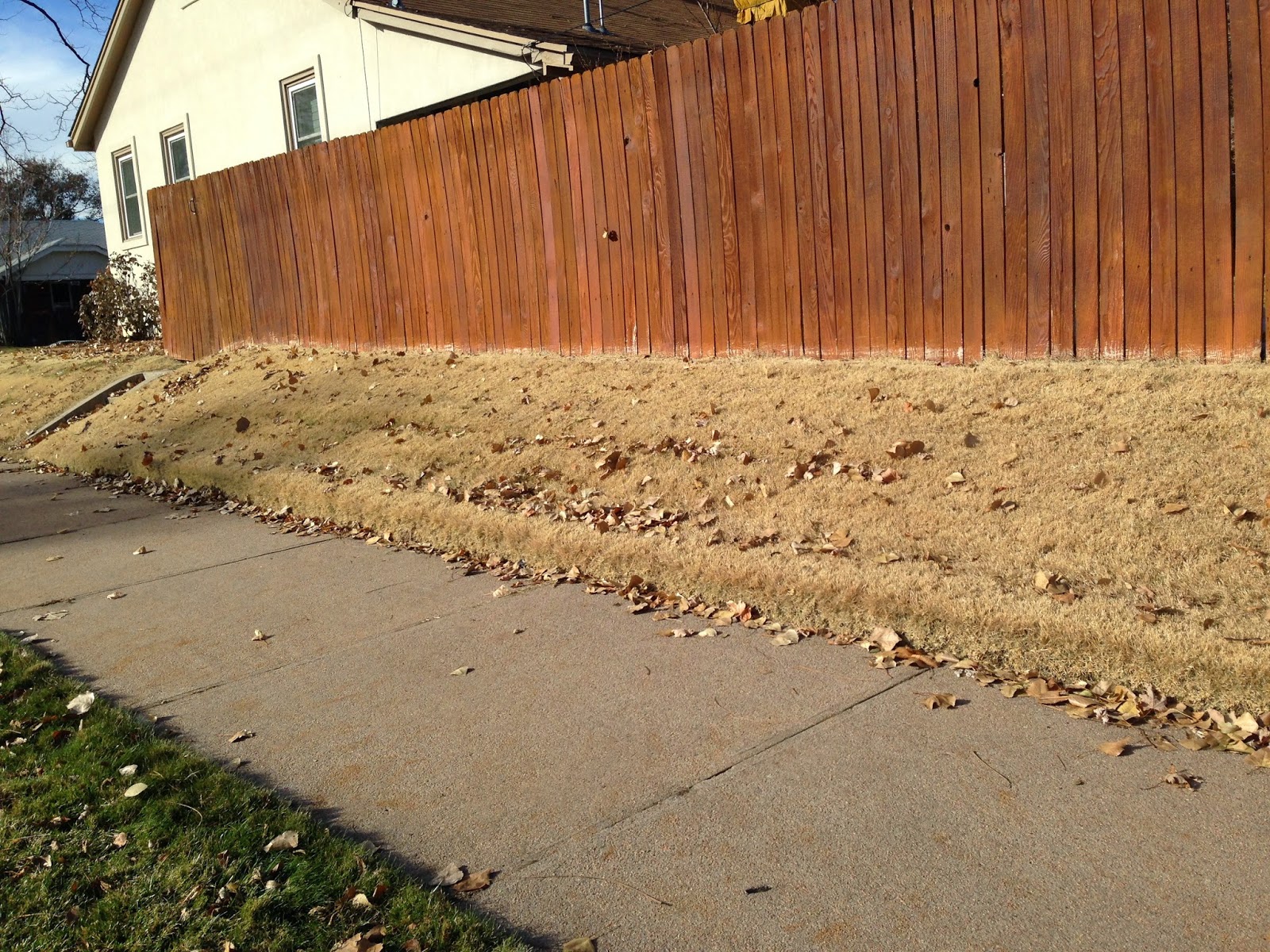Living along the Front Range means that warm daily temperatures can happen anytime in January or February, golfers rejoice and try to get in a quick nine holes. March temperatures and moisture levels are anyone's best guess, so no need to go there right now. But...what about the next few days when temperatures are predicted to be in the high 60's, low 70s - record breaking? Easy, haul out your hoses and water dry areas of your landscape, especially south and west facing grass areas and all plantings. The proof of needing water is the five second screw driver test. Use the longest one you have and poke it down into the grass or mulch. If it doesn't budge or goes down with an effort, you need to water.
Below are some photos I took in the University of Denver area. It's pretty evident that this south facing slope is dry and needs some attention. If it's a student rental then chances are it won't get watered, but let's hope the homeowner noticed the dryness as I did when I drove by and snapped the photos. These are perfect conditions for clover mites to start hatching then feeding on grasses and other plants. Turf damage from clover mites will have irregular areas of dead grass that is light brown in color. They are often mistaken for winter-related weather damage but these unwelcome chompers can start this month and continue feeding until May. They can be very troublesome on turf near south or west facing fences or buildings, the driest areas of landscapes.
Water mid-day. When watering slopes you may have to soak and cycle to prevent run off. That's where you let the sprinkler run for about ten minutes, check it to make sure it is soaking down, give it a thirty minute break, then water the same area again until it soaks down 8-10 inches. Read more - winter watering.




No comments:
Post a Comment
Note: Only a member of this blog may post a comment.